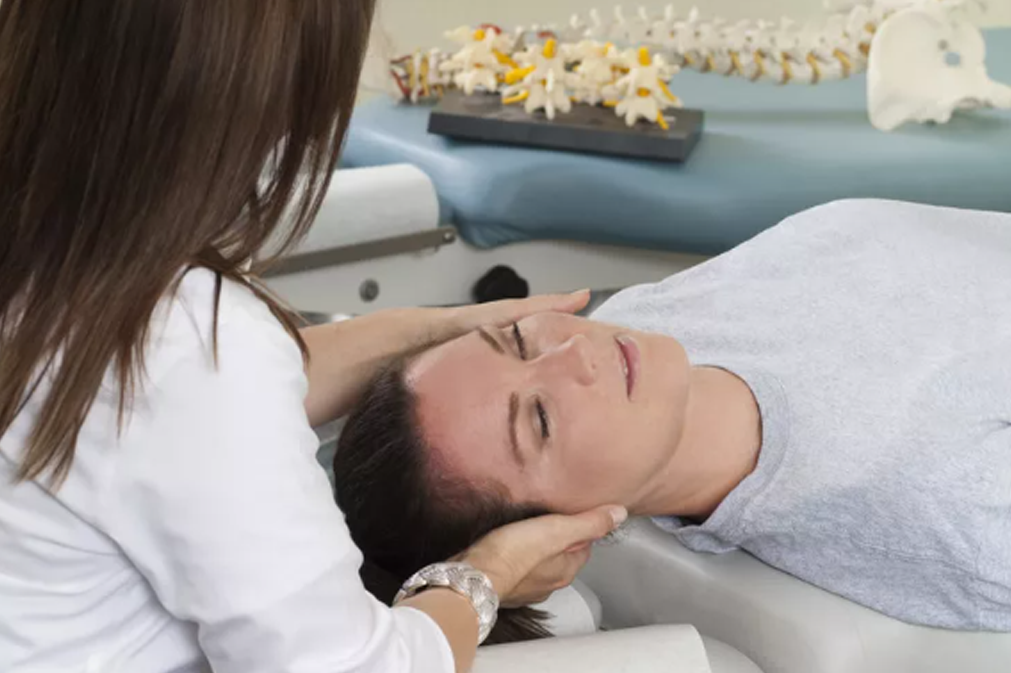Changes in Female Veterans’ Neck Pain Following Chiropractic Care at a Hospital for Veterans
SOURCE: Complement Ther Clin Pract. 2018 (Feb); 30: 91–95
Kelsey L.Corcoran DC, Andrew S.Dunn DC, MEd, MS, Bart N.Green DC, MSEd, PhD, Lance R.Formolo DC, MS, Gregory P.Beehler PhD, MA
Chiropractic Department,
Medical Care Line,
VA Western New York,
3495 Bailey Ave,
Buffalo, NY 14215, USA

OBJECTIVE: To determine if U.S. female veterans had demonstrable improvements in neck pain after chiropractic management at a Veterans Affairs (VA) hospital.
METHODS: This was a retrospective cross-sectional study of medical records from female veterans attending a VA chiropractic clinic for neck pain from 2009 to 2015. Paired t-tests were used to compare baseline and discharge numeric rating scale (NRS) and Neck Bournemouth Questionnaire (NBQ) scores with a minimum clinically important difference (MCID) set at a 30% change from baseline.
RESULTS: Thirty-four veterans met the inclusion criteria and received a mean of 8.8 chiropractic treatments. For NRS, the mean score improvement was 2.7 (95%CI, 1.9–3.5, p < .001). For the NBQ, the mean score improvement was 13.7 (95%CI, 9.9–17.5, p < .001). For the MCID, the average percent improvement was 45% for the NRS and 38% for the NBQ.
There are more articles like this @ our:
Chronic Neck Pain Page and the:
CONCLUSION: Female veterans with neck pain experienced a statistically and clinically significant reduction in NRS and NBQ scores.
KEYWORDS: Chiropractic; Neck pain; Veterans; Women
From the FULL TEXT Article:
Introduction
Neck pain is a common complaint among U.S. military active duty personnel and veterans. [1–5] The causes of neck pain are many, and for those involved with the military they can range from military office work [1] to significant combat trauma. [2] In the veteran population, painful musculoskeletal diagnoses are widespread. [6] Musculoskeletal conditions are the leading cause of morbidity for female veterans [7] and among all veterans with musculoskeletal pain, women are more likely to experience neck pain than men. [3]
Today, more women are entering the military than ever before. Women currently comprise 14% of those enlisted within the Department of Defense services. [8] Post-military separation, 32% of women enroll in Veterans Health Administration (VHA) services, a historic high for this population. [8] Determining safe and effective pain management strategies for women with musculoskeletal pain is particularly important as there are indications that over prescription of opioid medications may have a greater negative effect on women than men. [9] The Centers for Disease Control and Prevention (CDC) describe prescription painkiller overdoses as an “under-recognized” and increasing problem for women. [9] There has been a 400% increase in overdose deaths since 1999 for women (compared to a 265% increase for men) and currently 1 in 10 suicides by women in the United States involves prescription painkillers, which the CDC defines as opioids or narcotics. [9] This trend holds true in the veteran population, where substance use disorders, including opioid misuse, are more strongly associated with suicide for women than for men. [10]
One potential non-pharmacological treatment option for musculoskeletal pain is chiropractic care. VHA patients are referred to chiropractic services for a variety of musculoskeletal complaints and neck conditions comprise 24.3% of all referrals, the second leading reason for referral after lowback conditions. [11]While 15.8% of VHA chiropractic patients are currently female [11], little is known specifically about female veterans’ outcomes with chiropractic management [12]. To our knowledge, no study has examined female veterans’ outcomes with chiropractic care for neck pain. The objective of this paper was to determine if female veterans had demonstrable improvements in neck pain after chiropractic management within a Veterans Affairs (VA) hospital. Our hypothesis was that female veterans would have statistically significant and clinically meaningful improvements in neck pain following care.
Read the rest of this Full Text article now!






Leave A Comment